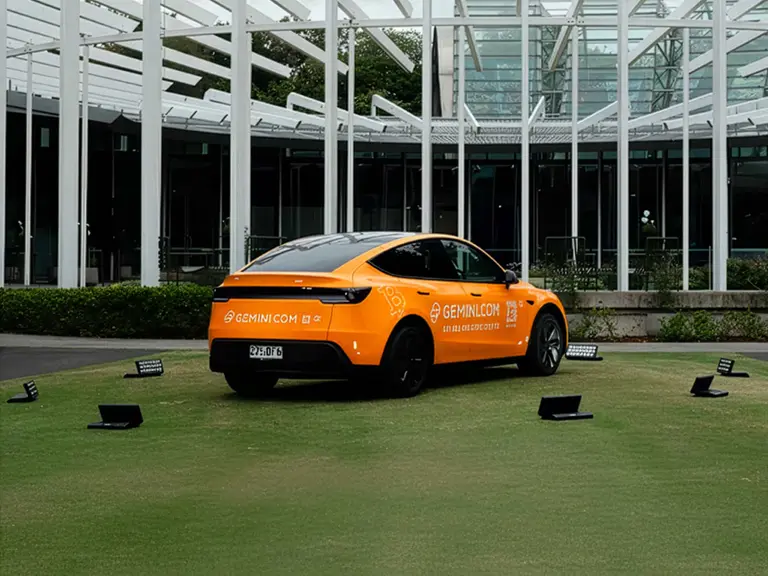
Published:
Readtime: 7 min
Every product is carefully selected by our editors and experts. If you buy from a link, we may earn a commission. Learn more. For more information on how we test products, click here.
- Google announced its newest quantum chip, Willow, uses 105 qubits and is far more powerful than its predecessor
- Google Quantum AI’s founder said the performance gains “lends credence” to the idea that we live in a multiverse
- The idea is that Willow might be communicating with parallel universes to finish calculations faster
Google has hit a new milestone in its quest to make quantum computing a real, tangible thing that we as a species can tap into to solve some of the biggest problems and questions we have about the world around us. The tech giant unveiled ‘Willow’, it’s 4th gen quantum chip that vastly outperforms the business’ previous efforts and seems to actively become more stable and more powerful the more complex it becomes.
The announcement led Google’s already high stock price to surge, which isn’t that shocking, but perhaps most surprisingly for us laypeople is that Google Quantum AI’s founder and lead Hartmut Nevan said that the chip’s performance “lends credence to the notion that quantum computation occurs in many parallel universes, in line with the idea that we live in a multiverse“. Excuse me?
This obviously has caused a bit of a stir, and it isn’t entirely clear how he made that leap.
It sounds a bit like something out of a sci-fi movie, and I’m definitely not going to pretend to be an expert, but it’s worth pointing out that Google is very much still in the theoretical research phase of this journey: a dedicated team of researchers has proved that quantum computing is a thing that we could achieve, now they’re trying to work out how to make it actually happen.
If you’re lost, don’t worry: this is an evolving scientific field that even the people working in it don’t fully understand. In saying that, we’re going to try to break it down so normies like us can at least comprehend what Google is on about.
What’s a Quantum Computer?
The computers we use every day, and have been iterating on for the past several decades, are what is known as a ‘classical computer’. Essentially, a classical computer utilises Binary as its language of choice. A ‘bit’, the smallest unit of data that a computer can store and process, is like a light switch. Each bit can only be in a single state at a time, on or off, which is represented by 0 or 1. Computers track data based on the language of bits: literally everything our computers do is based on a network of on/off switches sending a particular signal.
A quantum computer is a bit different. If you’re familiar with the concept of superposition, or Schrödinger’s cat, this won’t be too far of a stretch, but a quantum bit (or qubit) is capable of representing the potential of multiple states at once. Rather than only recording a 1 or a 0, it records both because it could be both. This allows a chip like Willow (which has 105 qubits) to perform incredibly complicated analytics in a fraction of the time a classical computer could.
How does that work? Let’s boil it down to a very small example: if you have 2 bits which can return a value of 1 or 0, there are 4 potential states that can be recorded: 00, 01, 11, and 10. If each of these states takes 1 second to record, it’d take a classical computer 4 seconds to record every possible permutation.
A quantum computer made up of two qubits, however, would be able to record the potential of each qubit at once: meaning it could record all four possible states in 1 second. The real power here is achieved when you add a much higher number of qubits together and try to record every possible state. Once again, something that would take a classical computer far longer can be achieved quickly because a quantum computer can record a number of potential states at once, rather than one at a time.
That’s a very basic explanation, so let’s back it up with Google’s own research.
When announced Willow, Google Quantum AI’s founder and lead Hartmut Nevan said that the new chip had performed a purposefully complicated exercise, called the random circuit sampling benchmark, in 5 minutes. One of the world’s most advanced ‘classical’ supercomputers, on the other hand, would take 10,000,000,000,000,000,000,000,000 years to perform the same exercise.
That’s 10 septillion years, which “exceeds known timescales in physics and vastly exceeds the age of the universe,” Nevan said.
The reason it could achieve such a monumental improvement in calculating capacity is because Willow is made up of 105 qubits and can track the potential of each of those at once, allowing it to record potential data much faster and come to the right answer sooner.
Okay, cool. So it’s a much, much, much faster computer (depending on use case), but why does that matter?
Well, Google itself has talked about how quantum computers’ ability to simultaneously analyse multiple datasets at once could go a long way to solving some of our biggest problems: like how to fix our rapidly changing climate and coming up with solutions for incurable diseases and conditions, like cancer. The more data you feed a ‘classical’ computer, the longer it takes to analyse and spit out a recommendation, but a quantum computer can theoretically handle far more data far quicker, and come up with more robust responses.
While Willow is impressive, it isn’t actually the most ‘powerful’ quantum computer out there today. Rather, a company called Atom Computing has created a computer that exceeds 1,000 qubits – though more doesn’t always mean better.
What does this have to do with multiverses?
One line of thinking regarding quantum computing (that Nevan is entertaining in his quote) posits that the reason a quantum computer can track all of the potential positions its qubits can be in at once is because it is communicating with other quantum computers in parallel universes that are also making the same calculations, and adding all their calculations together across universes to come to a solution sooner.
In simpler language, Willow is doing one calculation, while an unknown number of Willows in other universes parallel to our own are doing their own calculations, and they are sharing that data to avoid needing to individually do every possible calculation to finish the equation. How are they sharing the data between universes? I don’t know, ask Nevan.
Remember, this is all still theoretical and doesn’t prove anything, but Nevan is saying that the fact the chip can outperform our best supercomputers by such a wide margin means that it might have broken Newton’s theory of physics.
What does this mean for me?
All of that is very interesting in theory, but what does it actually mean.
At this point, it’s an exciting look at what the computing might look like one day, but it isn’t something you’re going to see in the next Pixel phone. Quantum chips need to be isolated in incredibly specific chambers, cooled to a point that it is colder than outer space, sealed away from any outside signals, such as microwaves, radiation, radio signals, etc, for fear of that ‘noise’ leading to potential mistakes, and have specific signals delivered by purpose-built wires.
We’re so far from the idea of a quantum chip being something that is remotely feasible in anything but the most specific of environments, and Google hasn’t figured out how to use all that potential power for ‘commercially relevant applications’ (or, in simpler terms, they haven’t figured out how it could be used to make money).
There’s a lot more to this than I could possibly fit in this story, so if you’re interested I’d recommend reading up on Google’s efforts yourself: you might learn something new! In the meantime, they’ve updated their quantum roadmap to showcase some improvement toward their goal of a large, error-corrected quantum computer.
Let’s hope it isn’t Skynet!

































Comments
We love hearing from you. or to leave a comment.